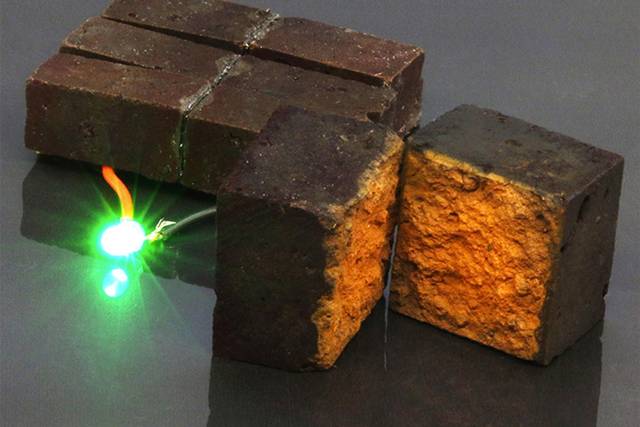
🧱 Bricks can be used to store energy
Processed bricks are turned into supercapacitors. By filling the pores of the brick with conductive polymers it can be used to store energy.
Share this story!
The Swedish magazine Ny Teknik writes that capricious energy production must be transformed into a more even distribution if the world is to be able to utilize solar and wind power in an efficient way. This requires large-scale energy storage that is not too expensive. Washington University in St. Louis has developed an adaptation of ordinary bricks that allow them to store energy. Researchers have turned the bricks into supercapacitors (the research team published their work in Nature).
After studying the nanostructure of the brick, the pores were filled with vapours and heated to 160 degrees Celsius. The bricks came out of the furnace covered with a conductive coating. For the stones to not short-circuit each other when stacked, the researchers separated them with thin layers of polypropylene.
Researcher Julio D'Arcy writes on the university's website, “In this work, we have developed a coating of the conducting polymer PEDOT, which is comprised of nanofibers that penetrate the inner porous network of a brick; a polymer coating remains trapped in a brick and serves as an ion sponge that stores and conducts electricity.”
During a test, two bricks were connected to an AAA-battery with copper wire. After about one minute, the brick was sufficiently charged to power an LED-lamp for eleven minutes. The team believes that 50 connected bricks should be able to keep a light equivalent to three watts going for about 50 minutes.
Right now, researchers expect the "prototype" to have the capacity to be charged 10 000 times and still retain about 90% of its original competence. The researchers' goal is for the "brick capacitor" to be able to deliver 100 000 charges.
Unlike batteries, supercapacitors can quickly give off large amounts of energy and then recharge swiftly. The weakness, compared to regular batteries, is that the amount of energy per kilo is lower. However, building material like this still means opportunities for, among others, homeowners to utilize their own electricity production, such as solar power.
Thanks to this revolutionary invention it will be possible to store solar energy close at hand. In the future, it might even replace the use of batteries to some extent. This would be a win for the environment since batteries have a big impact due to mining and disposal of metals.
Photo: D’Arcy laboratory
By becoming a premium supporter, you help in the creation and sharing of fact-based optimistic news all over the world.


